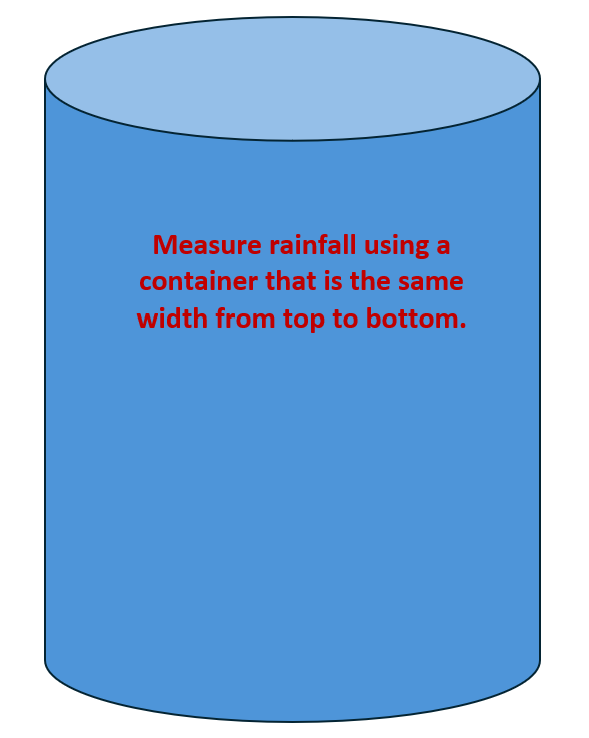How is rainfall measured?
From light drizzles to torrential downpours, quantifying the amount of rainfall that occurs in a given time and place means the difference between planning to walk outside with an umbrella or fleeing from a dangerous flash flood. But how is rainfall measured in a given area?
Image: All-Weather Rain Gauge sold by Forestry Suppliers
Image: Use something with uniform width from top to bottom, like a coffee can, to measure rainfall at home.
What is used to measure rainfall?
The National Weather Service in the United States uses multiple methods to take point precipitation measurements, or measurements of rainfall in a given spot. One set of methods are broadly identified as rain gauges and include the non-recording cylindrical container rain gauge (like the one in the photo on this page), recording weighing rain gauges, float rain gauges, and tipping-bucket rain gauges. Each of these instruments work on the same simple premise: capture water in a single spot and measure its depth. To measure rainfall over a wider landscape, other more “high-tech” methods are used, including weather station tools, radar, and satellites. These advanced instruments are used to both collect and interpret current rain events as well as possibly predict future rain events.
Why is rainfall measured in inches?
We typically measure water in units of liquid volume like milliliters, liters, cups, pints, quarts, and gallons. Rainfall, however, is measure in units of depth, like millimeters and inches. The reason for this is more simple that I anticipated: it is just easier to determine the depth of accumulated rain fall in a given event that it is to accurately estimate the volume of rain that fell. Thinking of rainfall in terms of depth instead of volume allows weather scientists and other experts to quantify rainfall without having to take landscape type and size into account. Measuring depth instead of volume adopts a few assumptions to create a specific mental image: if rainfall occurred in a perfectly flat area with no chance of runoff, how deep would the water be once the rain stopped?
Can I measure rainfall in my own backyard?
Absolutely! You can use simple items found in your house to measure rainfall in your own back yard. All you need is a cylinder that holds the same width from top to bottom, like an empty coffee can or protein powder container. The next time it rains, place your empty container outside throughout the entire duration of rainfall. Make sure there is nothing over the container. Once it stops raining, place a ruler inside the container to measure how many inches there are from the bottom of the container to the top of the water line. Repeat this process throughout the year to estimate how much average rainfall your backyard received that week, month, season, or year.
Closing Thoughts
Measuring rainfall in a given area is much simpler than I anticipated! Instruments from basic rain gauges to high-tech tools like radar and satellites can estimate weather conditions occurring right now and even be used to predict future weather events. And measuring rainfall in your own backyard is as simple as placing an empty coffee container outside.
Dångkulo' na' saina ma'åse'! Thank you so much for reading this Science in a Nutshell post!
Notes:
Random Thoughts posts are brief summaries of much larger topics.
Underlined text are hyperlinked to referenced sources.
Text in bold brown font are important terms to remember.
Additional Resources
CoCoRaHS Tutorial - How the rain gauge works. CoCoRaHS HQ: https://www.youtube.com/watch?v=pLRAsAo5l0o.
How to Measure Rainfall. Delaware State Parks: https://www.youtube.com/watch?v=CFM4mcEorgs.
Measuring rainfall. MET office - UK Weather: https://www.youtube.com/watch?v=JVOxLrMaWA8.
Learn How to Measure Rainfall. Professor Pete’s Classroom: https://www.youtube.com/watch?v=WyMabcRzUcw.
Measuring Rain. Teach for Life: https://www.youtube.com/watch?v=rzBQtWnjFZ8.
How much is “an inch” of rainfall. WWLTV: https://www.youtube.com/watch?v=9ipkEmwxT5k.
Post Date: 16 November 2024

